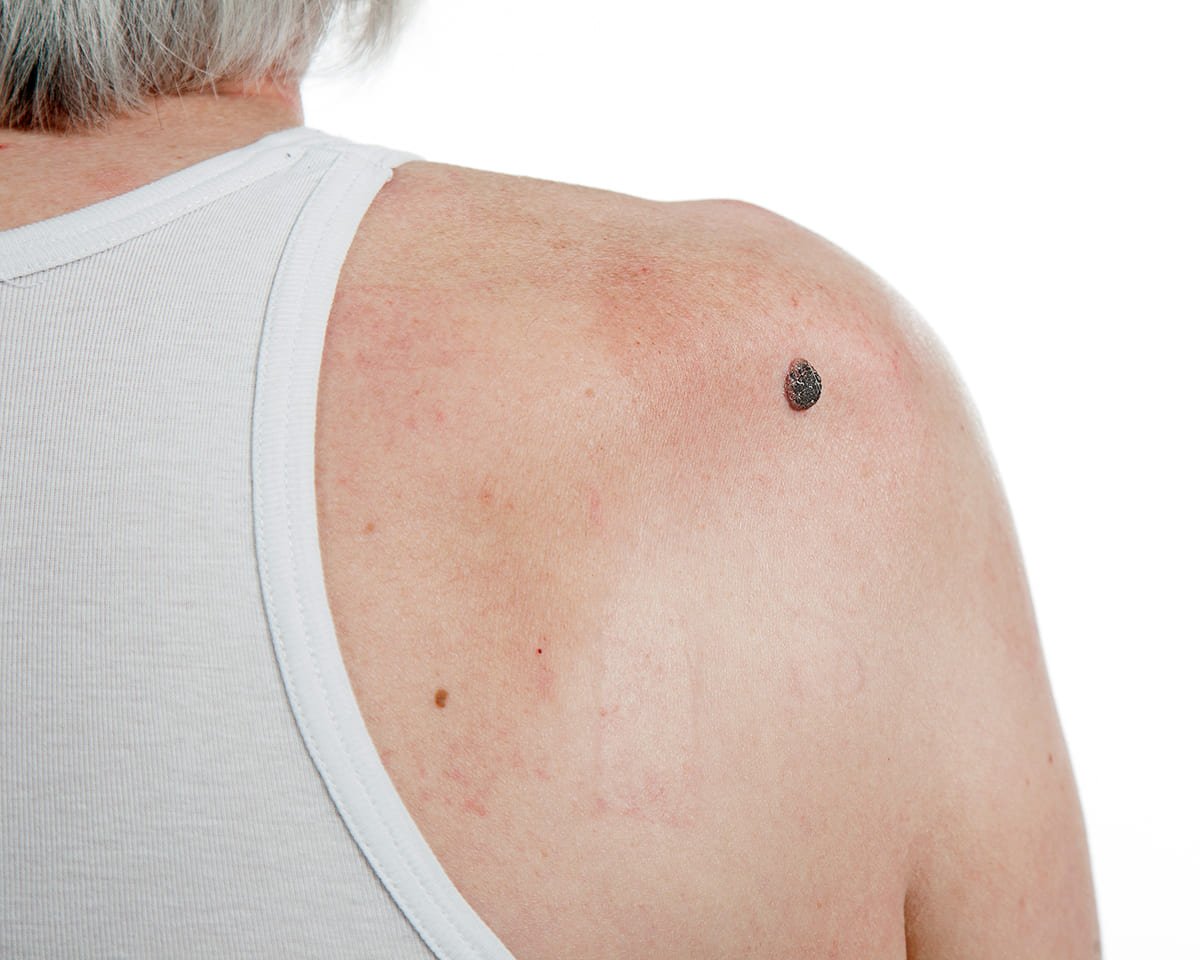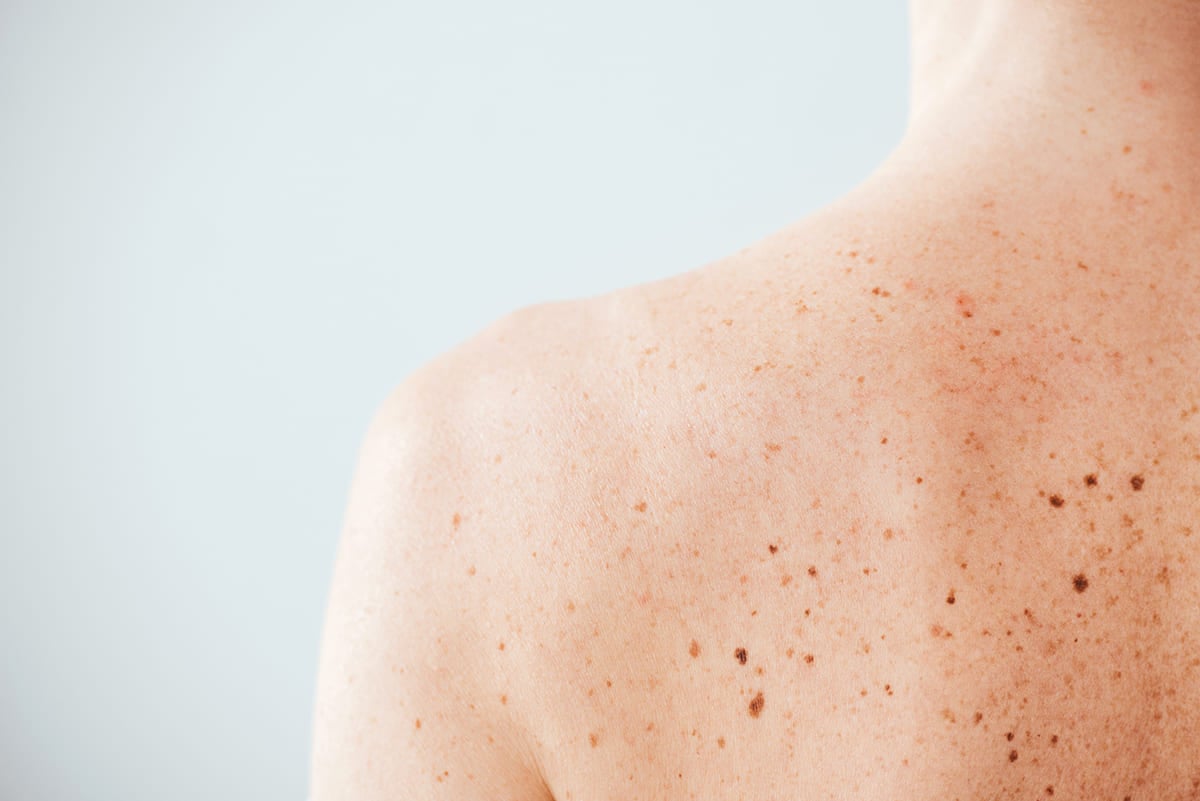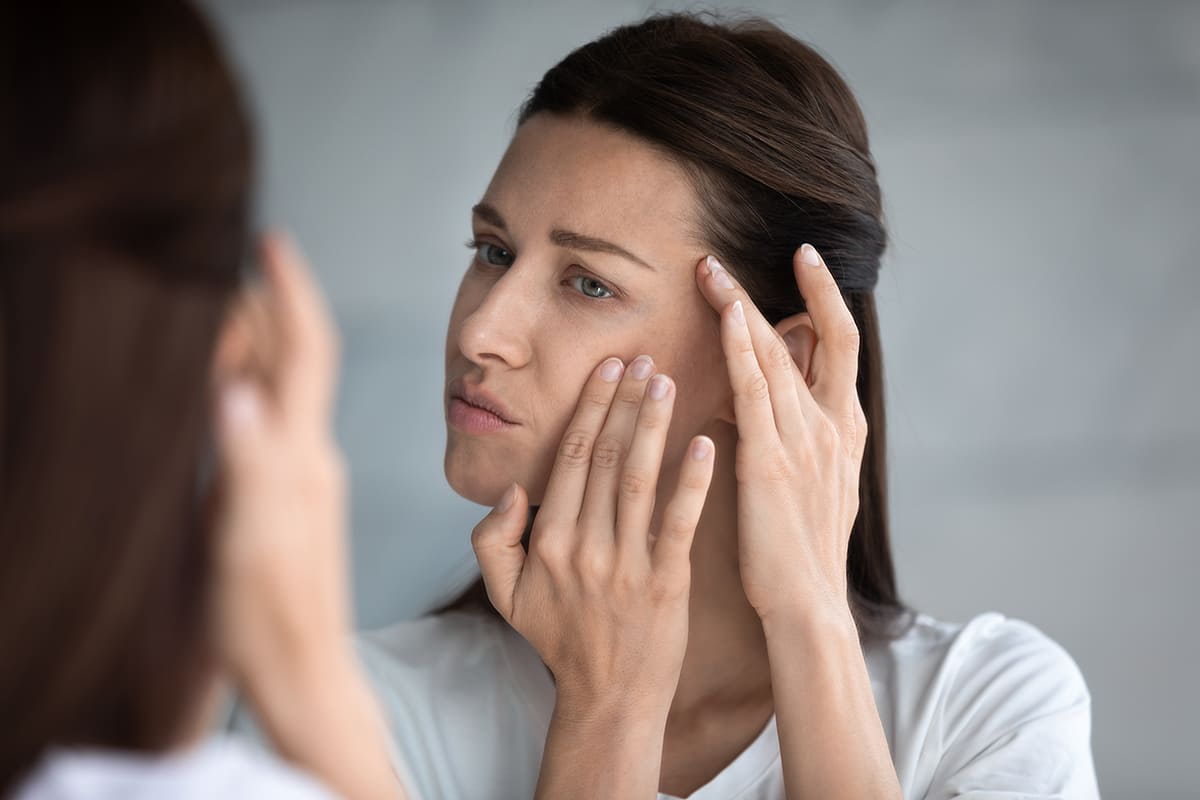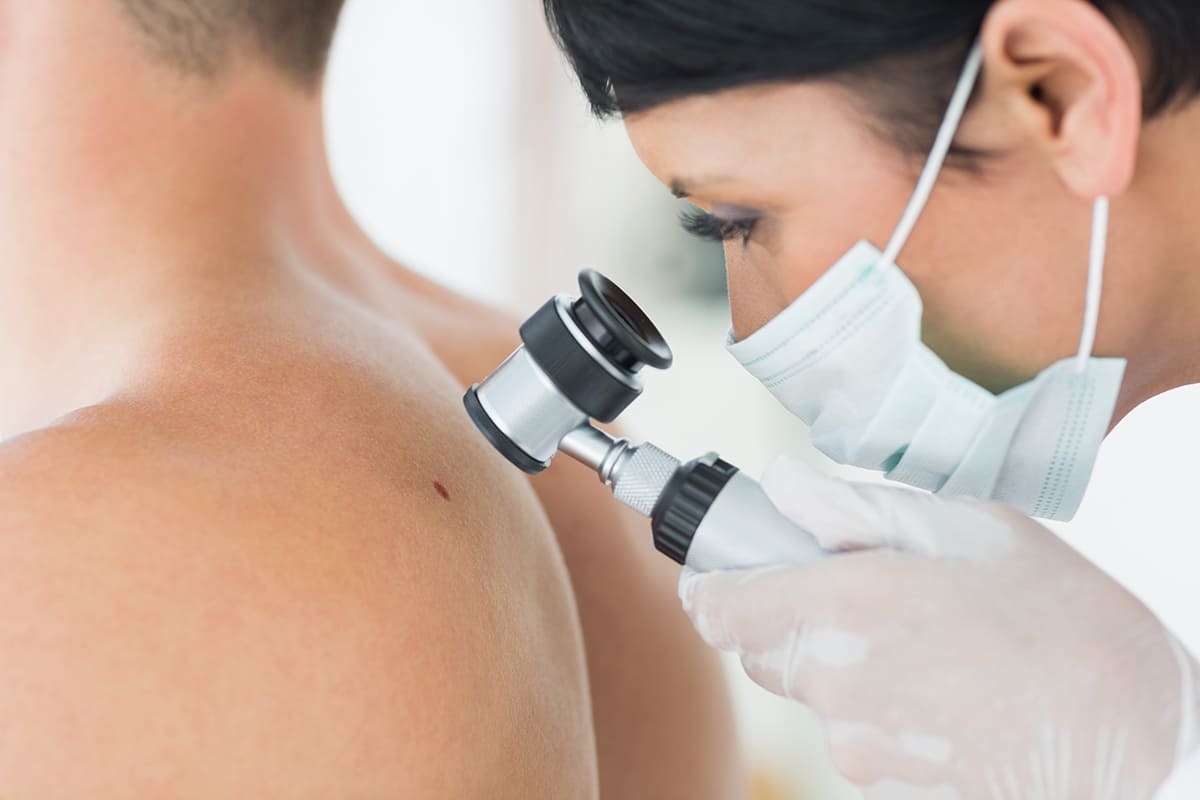
Management of skin cancer
Skin cancer is a disease characterized by the uncontrolled growth of abnormal skin cells. There are three main types of skin cancer: basal cell carcinoma, squamous cell carcinoma, and malignant melanoma.
Basal Cell Carcinoma:
Basal cell carcinoma (BCC) is the most common type of skin cancer, accounting for approximately 80% of all cases. It usually appears on sun-exposed areas of the skin, such as the face, neck, and hands. BCC typically grows slowly and rarely spreads to other parts of the body.
Sign and symptom of skin basal cell carcinoma
- A pearly or waxy bump that may bleed or crust over
- A flat, flesh-colored or brown scar-like lesion
- A bleeding or scabbing sore that heals and returns
- A pink growth with an elevated border and a crusted indentation in the center
- A pink, translucent, or shiny bump that has tiny blood vessels on its surface
- A white, waxy, scar-like lesion without a clearly defined border

Squamous Cell Carcinoma:
Squamous cell carcinoma (SCC) is the second most common type of skin cancer. It also usually appears on sun-exposed areas of the skin, but it can also develop on other parts of the body. SCC can grow quickly and has a higher risk of spreading to other parts of the body than BCC.
Sign and symptom of Skin Squamous Cell Carcinoma:
- A rough, scaly patch on the skin that may crust or bleed
- A firm, red nodule on the skin that may have a crusted surface
- A sore that does not heal or heals and then returns
- A flat, scaly patch that may have a hard, horny surface
- A wart-like growth that crusts and bleeds
- A raised growth with a central depression that may bleed or crust
The investigations for skin basal cell carcinoma and skin squamous cell carcinoma may include the following:
- A physical examination of the affected area by a dermatologist
- Skin biopsy: A sample of the skin tissue is removed and examined under a microscope to check for cancer cells
- Imaging tests like X-rays, CT scans, and MRI scans may be done if the cancer has spread to nearby tissues or organs.
Treatment basal cell carcinoma and squamous cell carcinoma
The treatment of basal cell carcinoma and squamous cell carcinoma depend on the size, location, and depth of the tumor, as well as the patient’s age, overall health, and personal preferences. The most common treatment options include:
- Electrosurgery and curettage: A surgical procedure that involves scraping away the cancerous tissue and using an electric needle to destroy any remaining cancer cells.
- Excisional surgery: The tumor and a surrounding area of healthy tissue are surgically removed. This may be done under local anesthesia in a doctor’s office or as an outpatient procedure in a hospital.
- Mohs surgery: a specialized surgical technique that involves removing the tumor layer by layer, examining each layer under a microscope until no cancer cells remain.
- Cryotherapy: freezing the tumor with liquid nitrogen.
- Topical treatments: for superficial BCC, topical treatments such as imiquimod, 5-fluorouracil, or photodynamic therapy may be used.
- Radiation therapy: High-energy radiation is used to kill cancer cells and shrink tumors.
- Chemotherapy: Drugs that kill cancer cells may be used in combination with radiation therapy.
Basal cell carcinoma and squamous cell carcinoma are highly treatable, and most cases can be cured with surgery alone. However, if the cancer has spread to nearby lymph nodes or other parts of the body, a more aggressive treatment plan such as radiation or chemotherapy may be necessary.
Prognosis basal cell carcinoma and squamous cell carcinoma
In general, both basal cell carcinoma and squamous cell carcinoma have a good prognosis if caught early and treated appropriately. The five-year survival rate for localized SCC and BCC is around 95% and 99% respectively. If the cancer has spread to other parts of the body or has reached an advanced stage, the prognosis may be less favorable.

Malignant Melanoma:
Malignant melanoma is the most dangerous type of skin cancer. It can develop anywhere on the body, including areas that are not exposed to the sun. Malignant melanoma can grow quickly and has a high risk of spreading to other parts of the body.
Sign and symptom of skin malignant melanoma
- A mole that changes size, shape, or color
- A new mole that appears and grows rapidly
- An irregularly shaped mole or patch of skin
- A mole with an irregular border or uneven coloring
- A mole that is asymmetrical, with one half not matching the other
- A mole that itches, bleeds, or becomes painful
- Dark, black, or brown streaks under the nail
- A sore that does not heal
The investigations for skin malignant melanoma may include the following:
- A physical examination of the affected area by a dermatologist
- Skin biopsy: A sample of the skin tissue is removed and examined under a microscope to check for cancer cells
- Sentinel lymph node biopsy: A test to see if the cancer has spread to nearby lymph nodes
- Imaging tests like X-rays, PET CT-scans, and MRI scans may be done to check for cancer in other parts of the body.
- Sentinel lymph node biopsy
Sentinel lymph node biopsy (SLNB) is a diagnostic procedure for determining whether the melanoma has spread to nearby lymph nodes, which is a key factor in determining the stage of the cancer and guiding treatment decisions. SLNB is the first lymph nodes that receive drainage from the primary melanoma site and generally recommended for patients with intermediate or thick melanomas (more than 1 mm), as these are more likely to spread to nearby lymph nodes.
If cancer is detected in the sentinel lymph node, additional lymph nodes may be removed for further evaluation, and the patient may be recommended for further treatment such as chemotherapy, immunotherapy, or radiation therapy.
The procedure is typically performed under general anesthesia and involves injecting a radioactive tracer and/or a blue dye near the primary melanoma site to identify the sentinel lymph nodes. The lymph nodes are then removed and examined for cancer cells by a pathologist.
Treatment of skin malignant melanoma
The treatment of skin malignant melanoma depends on the stage of the cancer, which is determined by the thickness and depth of the tumor, the presence of cancer cells in nearby lymph nodes, and whether the cancer has spread to other parts of the body. The most common treatment options for skin malignant melanoma include:
- Surgery: The tumor and surrounding healthy tissue are removed. In some cases, a skin graft or flap may be necessary to cover the wound.
- Sentinel lymph node biopsy: A biopsy of the lymph nodes is done to determine if the cancer has spread beyond the primary tumor.
- Lymph node dissection: If cancer is found in the sentinel lymph node, a more extensive lymph node dissection may be necessary.
- Targeted therapy: Drugs that may be used for melanoma that has specific genetic mutations.
- Immunotherapy: Drugs that help the body’s immune system to fight cancer may be used after surgery to reduce the risk of recurrence or used as the first line of treatment for stage 4 melanoma.
- Radiation therapy: High-energy radiation is used to kill cancer cells and shrink tumors. Radiation therapy may be used to treat melanoma that has spread to other parts of the body or for palliative care.
The treatment plans are individualized and may involve a combination of different treatments depending on the stage of the cancer, the patient’s overall health, and other factors. It’s recommended to work closely with a team of healthcare professionals, including a dermatologist, surgeon, and oncologist, to develop a personalized treatment plan.
Prognosis of skin malignant melanoma
The five-year survival rates for melanoma are generally good for early-stage melanoma but decrease as the cancer progresses. The American Cancer Society provides 5-year survival rates for melanoma based on the stage of the cancer at the time of diagnosis.
- Stage 0 melanoma (melanoma in situ): close to 100% survival rate
- Stage I melanoma: 95 – 100% survival rate
- Stage II melanoma: 80 – 90% survival rate
- Stage III melanoma: 40 – 70% survival rate
- Stage IV melanoma: 15 – 20% survival rate
These survival rate are just averages, and individual prognosis can vary widely based on many factors.

Skin Cancer Prevention:
Preventing skin cancer involves protecting the skin from UV radiation, which is the primary cause of skin cancer. Some measures to prevent skin cancer include:
- Avoid sunburns: Try to avoid sunburns by staying in the shade, wearing protective clothing such as hats, sunglasses, and long-sleeved shirts, and using broad-spectrum sunscreen with at least SPF 30.
- Limit sun exposure: Try to limit your sun exposure, especially during peak hours when the sun is strongest (between 10 a.m. and 4 p.m.).
- Check your skin regularly: Perform regular self-examinations of your skin, paying close attention to any moles or spots that look suspicious. If you notice any changes in size, shape, color, or texture, see a dermatologist right away.
- Avoid tanning beds: Tanning beds expose your skin to harmful UV radiation, which increases your risk of skin cancer. Try to avoid using tanning beds altogether.
- Protect children: Protect children from the sun by using sunscreen, hats, and other protective clothing, and by limiting their sun exposure.
- Be aware of your family history: If you have a family history of skin cancer, you may be at higher risk, and it’s important to take extra precautions to protect your skin.
- Quit smoking: Smoking has been linked to an increased risk of skin cancer, so quitting smoking can help reduce your risk.
Remember, prevention is key when it comes to skin cancer. By taking these steps, you can help protect yourself and reduce your risk of developing skin cancer.
It’s important to note that early detection and treatment can lead to better outcomes, so it’s recommended to have regular skin checks by a dermatologist, especially if you have a family history of skin cancer or have had multiple sunburns in the past.
